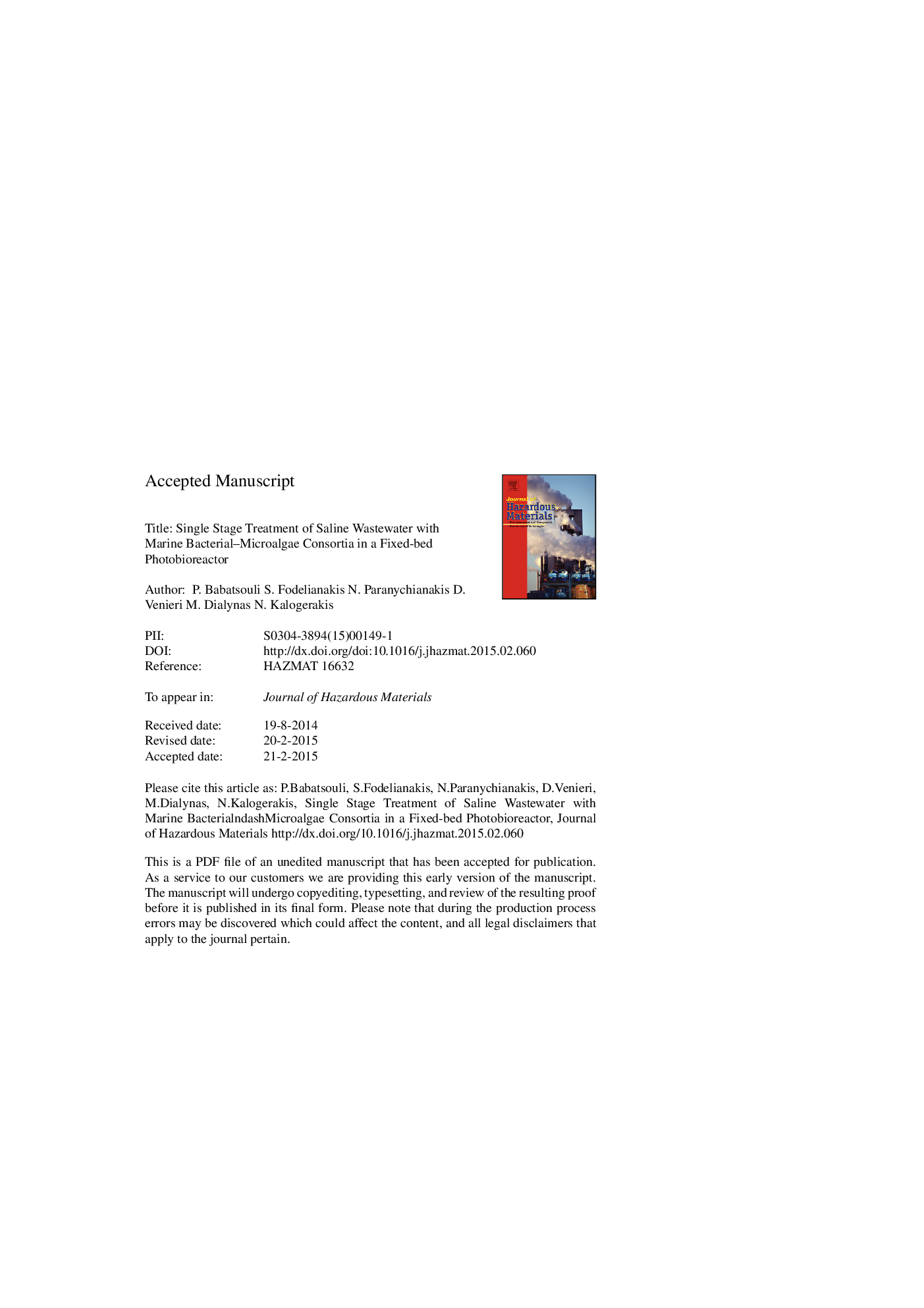| Article ID | Journal | Published Year | Pages | File Type |
|---|---|---|---|---|
| 575887 | Journal of Hazardous Materials | 2015 | 33 Pages |
Abstract
Currently, the treatment of aquaculture-origin effluents is mainly performed through land-based recirculating aquaculture systems (RAS). In this study, we evaluate and introduce a novel immobilized/packed bed bioreactor which uses a synthetic textile as the support medium. A marine microbial consortium was developed on the textile by its inoculation with the microalgae Picochlorum sp. The bioreactor was tested with variable loadings of C and N and showed outstanding performance approaching removal rates up to 95% within a few hours (4-5 h) of operation. Pyrosequencing analysis revealed a novel microbial consortium consisting mainly of chitrinomycetes, Pseudomonas sp. and the absence of β-proteobacteria, which is the Class encompassing autotrophic nitrifiers. Quantitative polymerase chain reaction further confirmed these findings suggesting heterotrophic nitrification and aerobic denitrification as the principal mechanisms of N-removal from the bioreactor. Overall our findings reveal the potential of the AdvanTex System for the treatment of marine aquaculture effluents-COD reduction and N-removal, in a single stage.
Keywords
Related Topics
Physical Sciences and Engineering
Chemical Engineering
Chemical Health and Safety
Authors
P. Babatsouli, S. Fodelianakis, N. Paranychianakis, D. Venieri, M. Dialynas, N. Kalogerakis,
